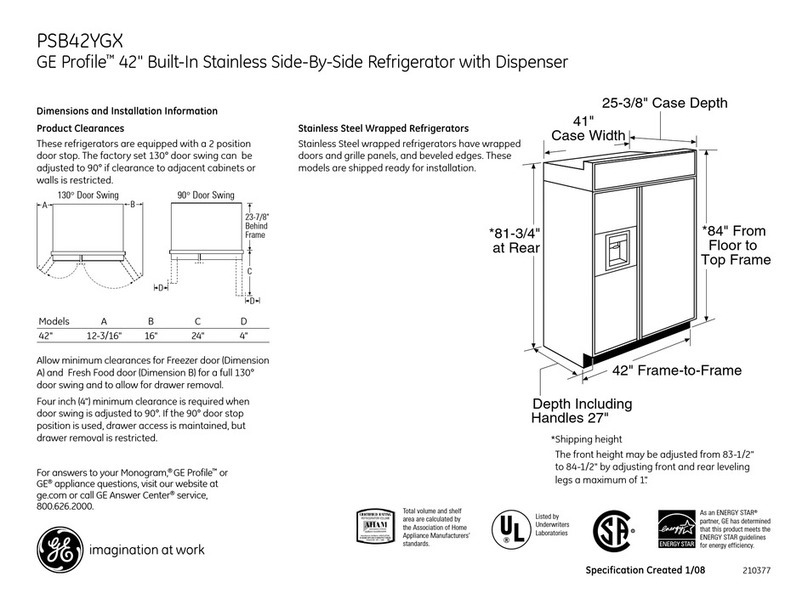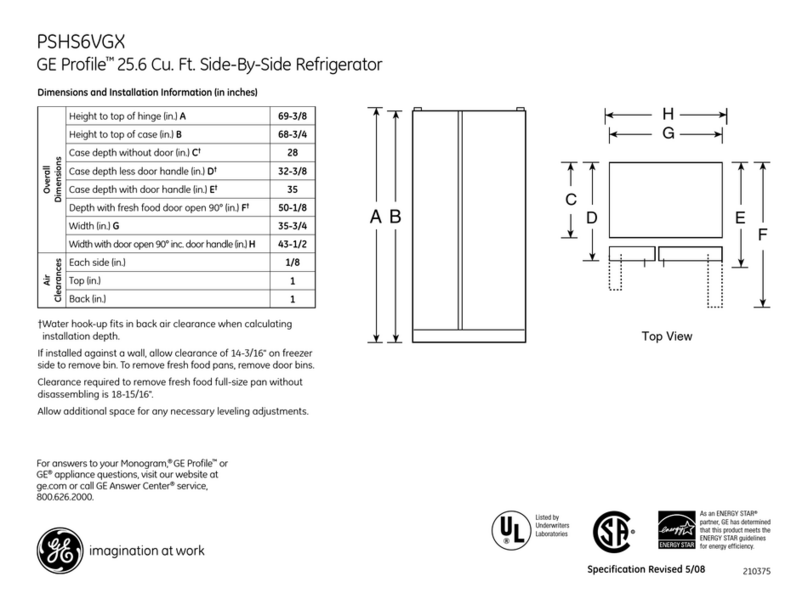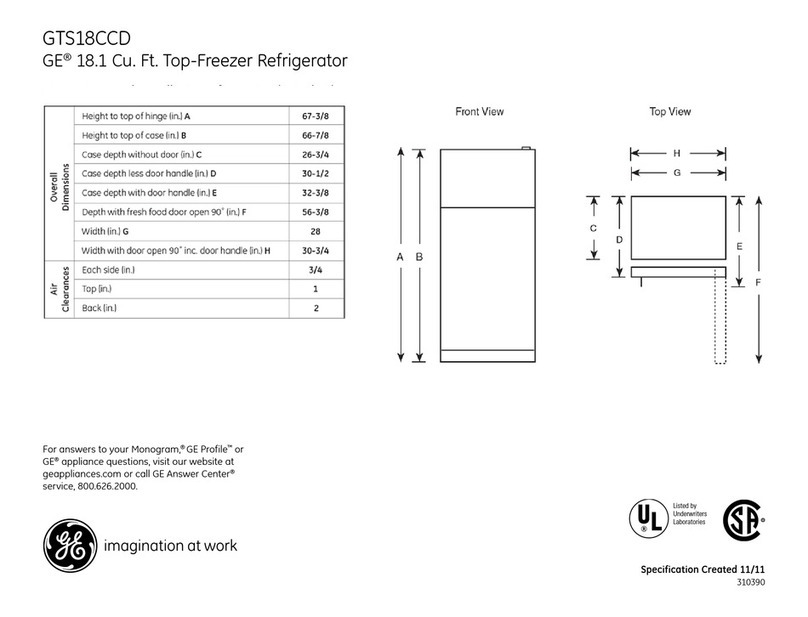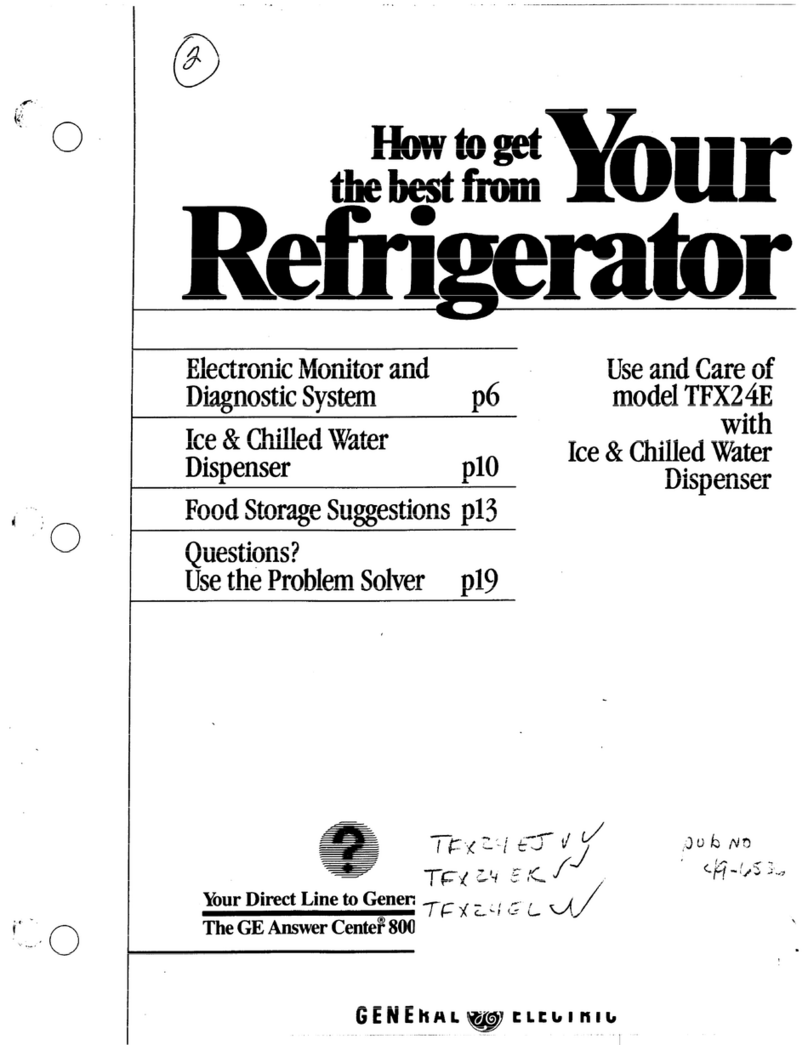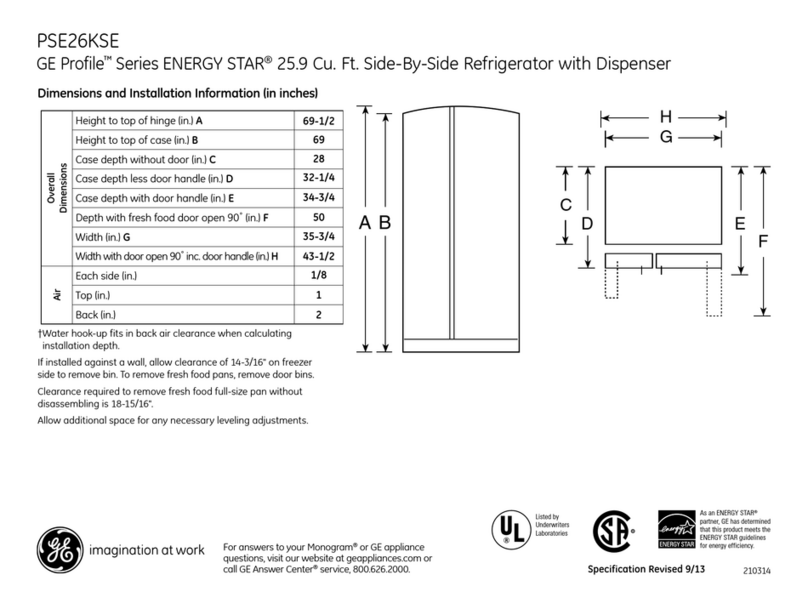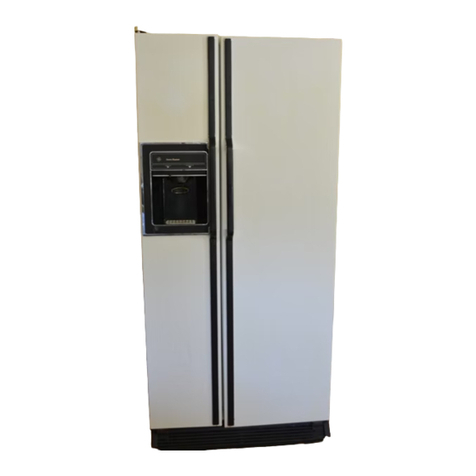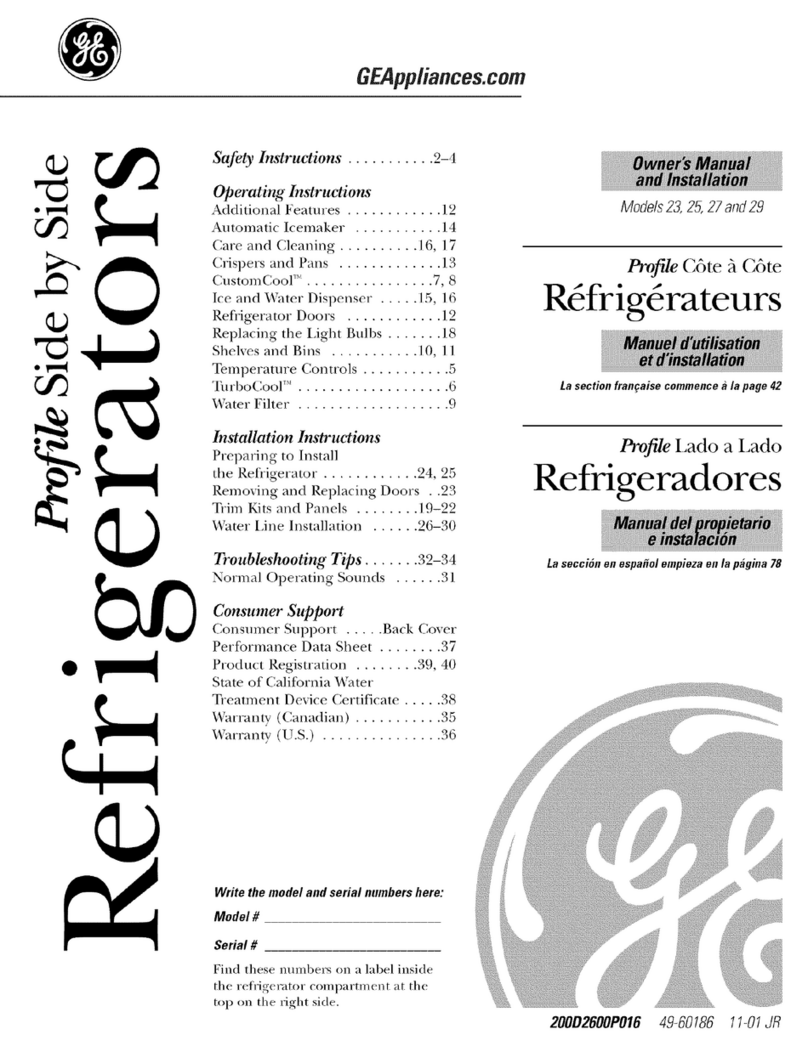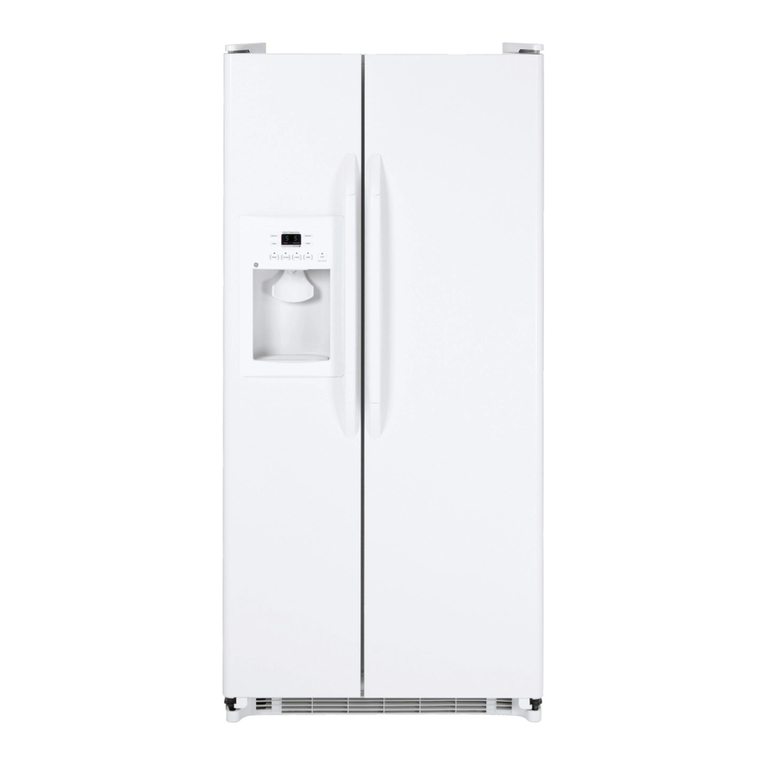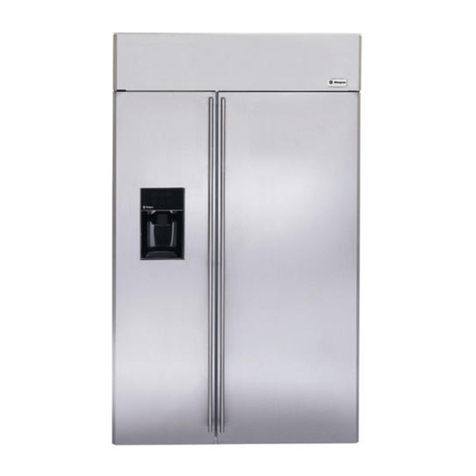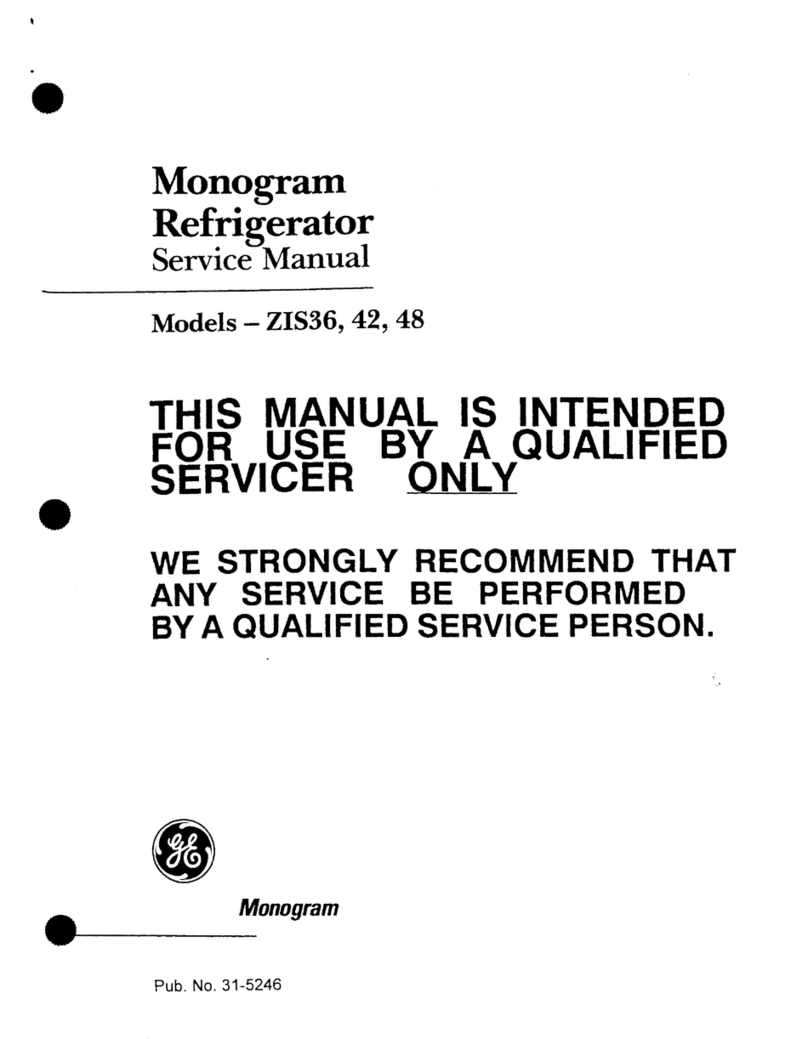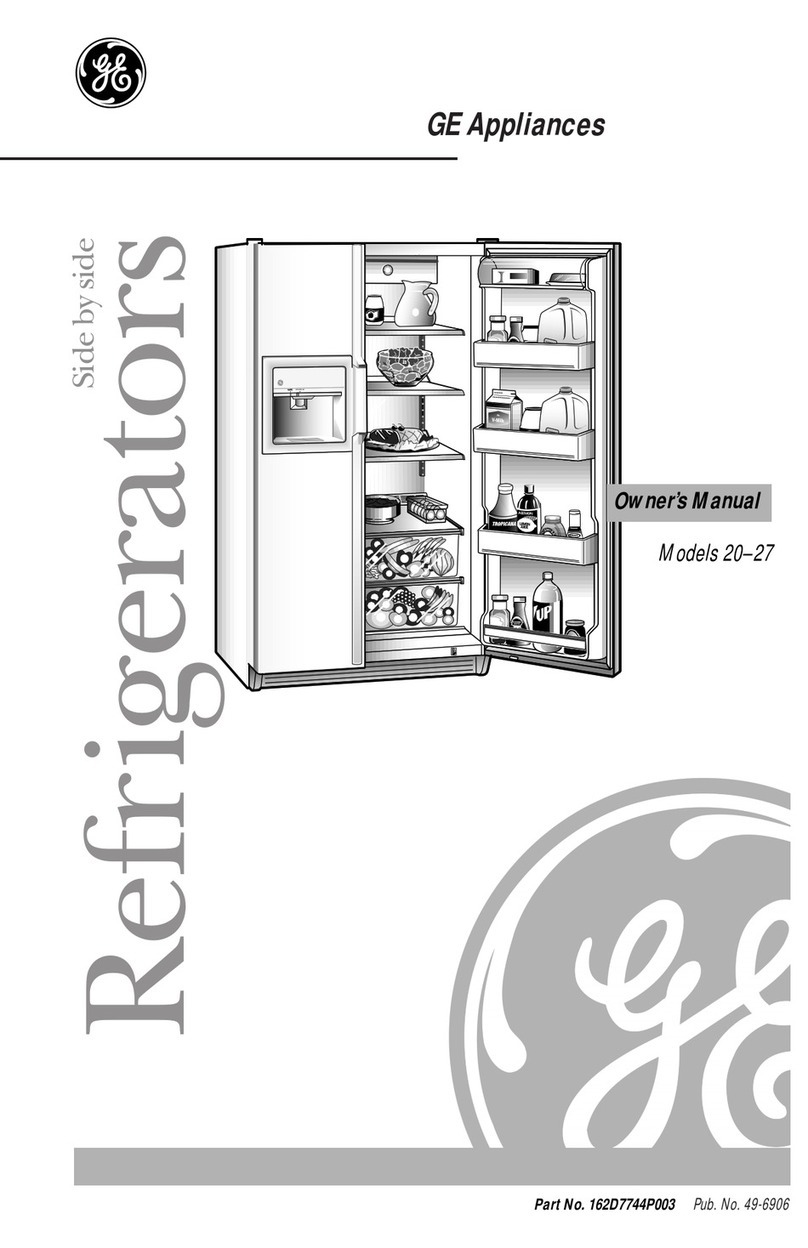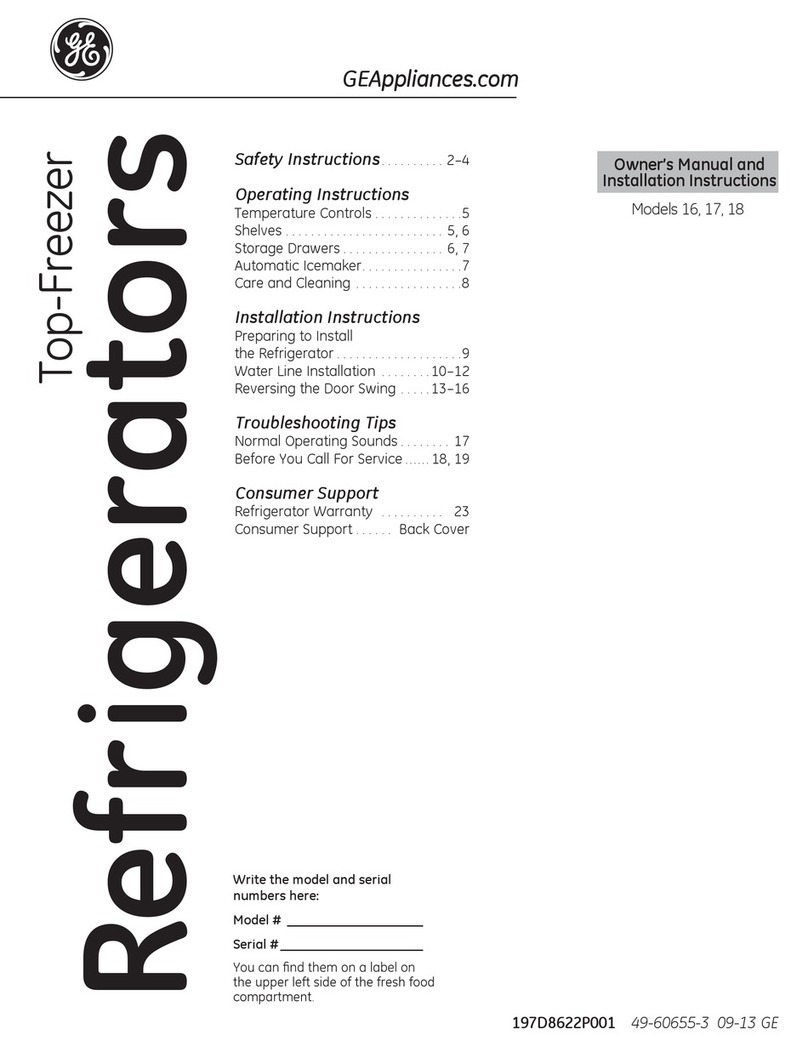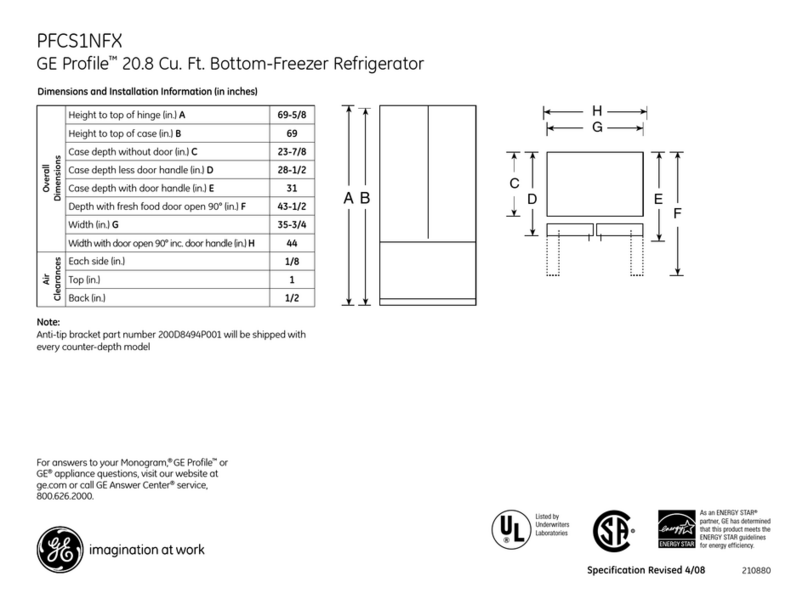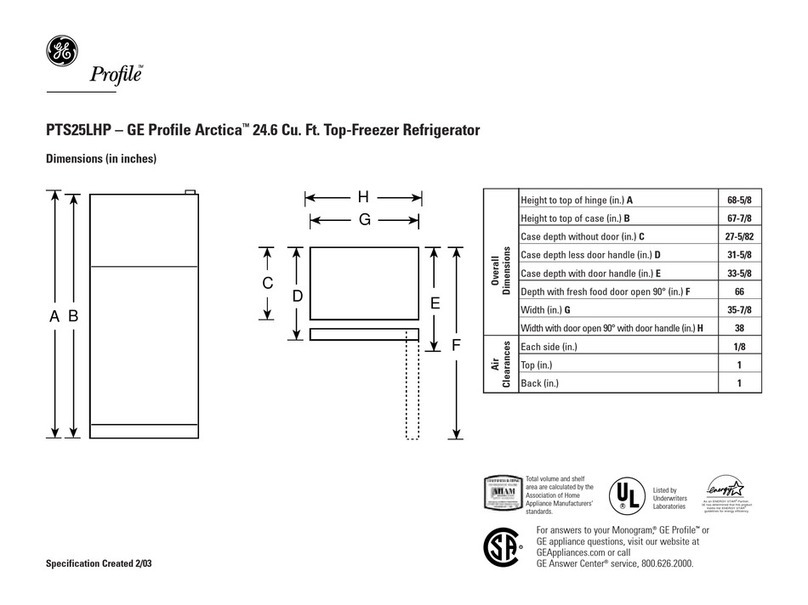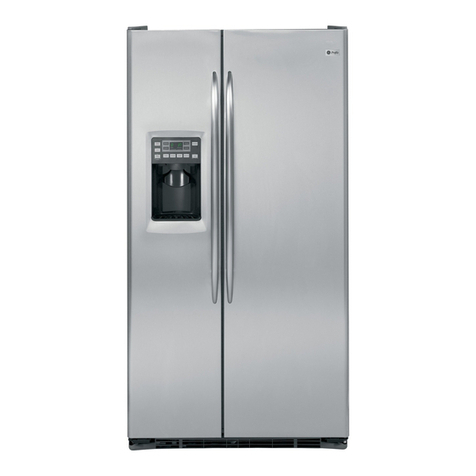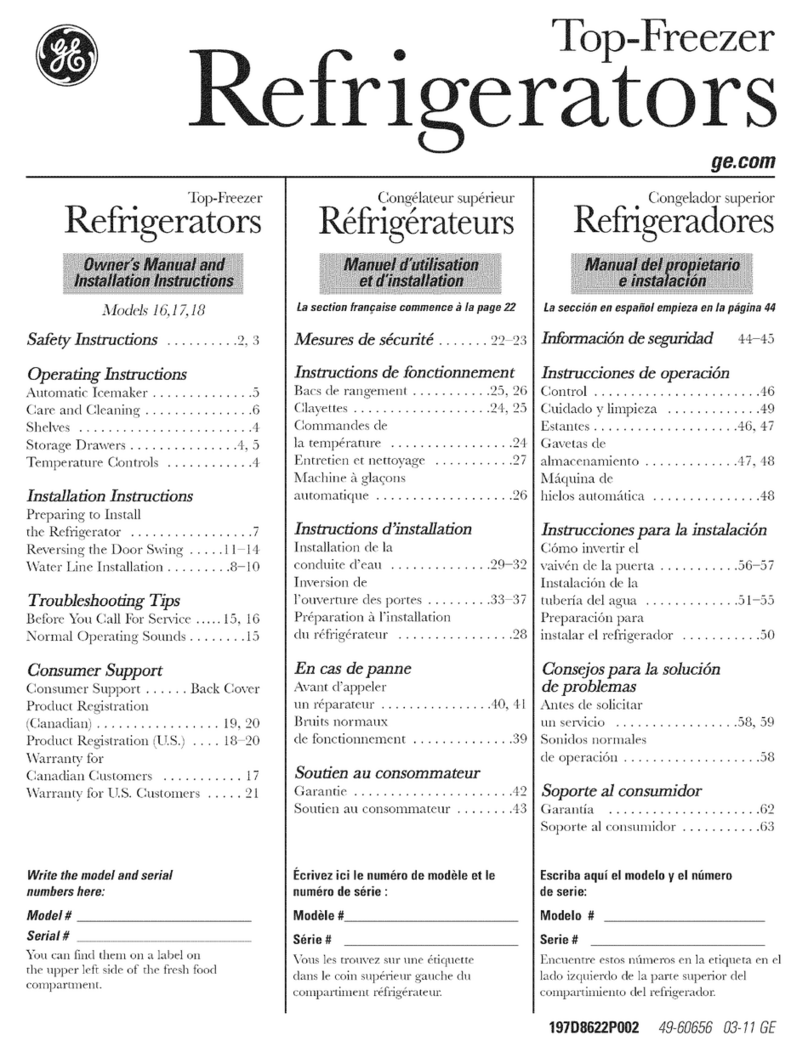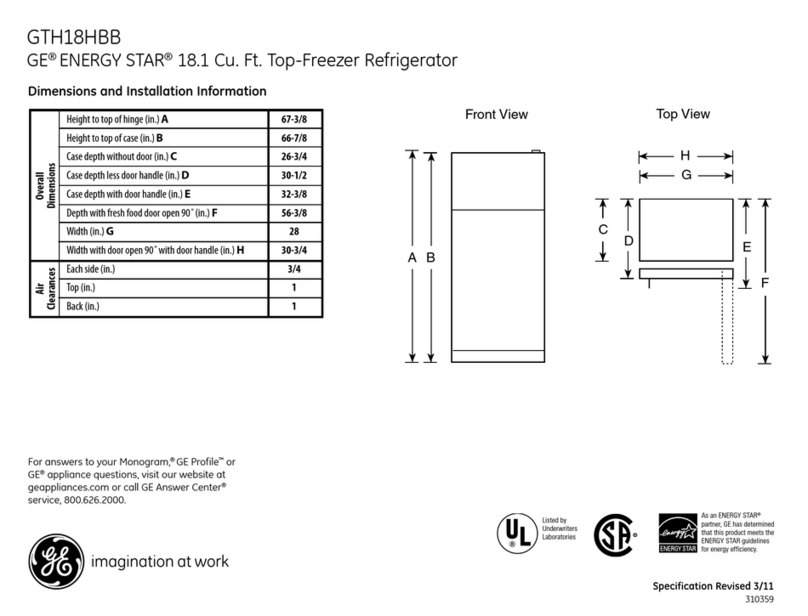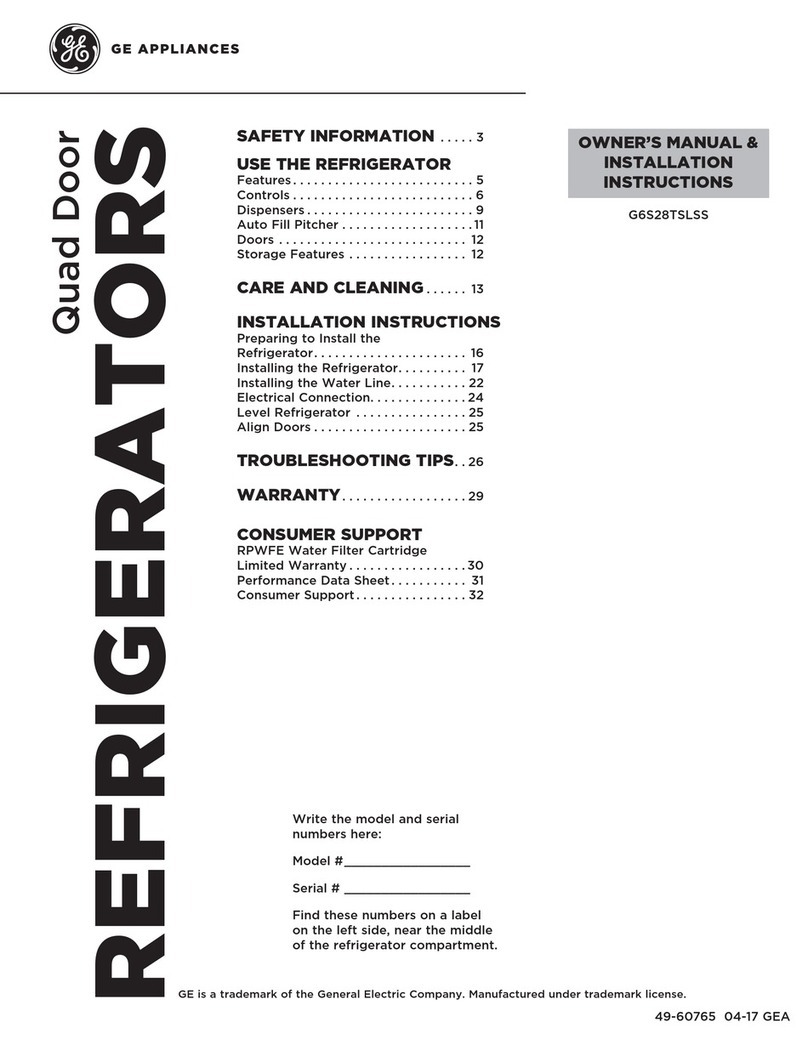Consumer SupportTroubleshooting TipsOperating Instructions
Safety Instructions Installation Instructions
Care and cleaning of the refrigerator. GEAppliances.com
9
Cleaning the Outside
The door handles and trim. Clean with a cloth
dampened with soapy water. Dry with a soft
cloth. Do not use wax on the door handles
and trim.
Keep the outside clean. Wipe with a clean
cloth lightly dampened with kitchen
appliance wax or mild liquid dish
detergent. Dry and polish with a clean,
soft cloth.
Do not wipe the refrigerator with a soiled dish
cloth or wet towel. These may leave a residue
that can erode the paint. Do not use scouring
pads, powdered cleaners, bleach or cleaners
containing bleach because these products can
scratch and weaken the paint finish.
The stainless steel panels and door handles
(on some models) can be cleaned with
a commercially available stainless steel
cleaner such as Stainless Steel Magic.™
Stainless Steel Magic is available at Ace,
True Value, Servistar, HWI and other
leading stores. It is also available through
GE Parts and Accessories, 800.626.2002,
or visit our Website, GEAppliances.com.
In Canada, call 1.888.261.3055 or visit
our Website, geappliances.ca. Order part
number WX10X15.
Do not use appliance wax or polish on the
stainless steel.
Cleaning the Inside
To help prevent odors, leave an open box of
baking soda in the refrigerator and freezer
compartments.
Unplug the refrigerator before cleaning. If this
is not practical, wring excess moisture out
of sponge or cloth when cleaning around
switches, lights or controls.
Use an appliance wax polish on the inside
surface between the doors.
Use warm water and baking soda solution—
about a tablespoon (15 ml) of baking soda
to a quart (1 liter) of water. This both cleans
and neutralizes odors. Rinse and wipe dry.
After cleaning the door gaskets, apply a
thin layer of petroleum jelly to the door
gaskets at the hinge side. This helps keep
the gaskets from sticking and bending out
of shape.
Avoid cleaning cold glass shelves with hot water
because the extreme temperature difference may
cause them to break. Handle glass shelves
carefully. Bumping tempered glass can cause
it to shatter.
Do not wash any plastic refrigerator parts in
the dishwasher.
Under the Refrigerator
For most efficient operation, keep the
area under the refrigerator clean. Remove
the base grille and sweep away or vacuum
up dust.
For best results, use a brush specially
designed for this purpose. It is available at
most appliance parts stores.
Clean the condenser coils at least
once a year.
